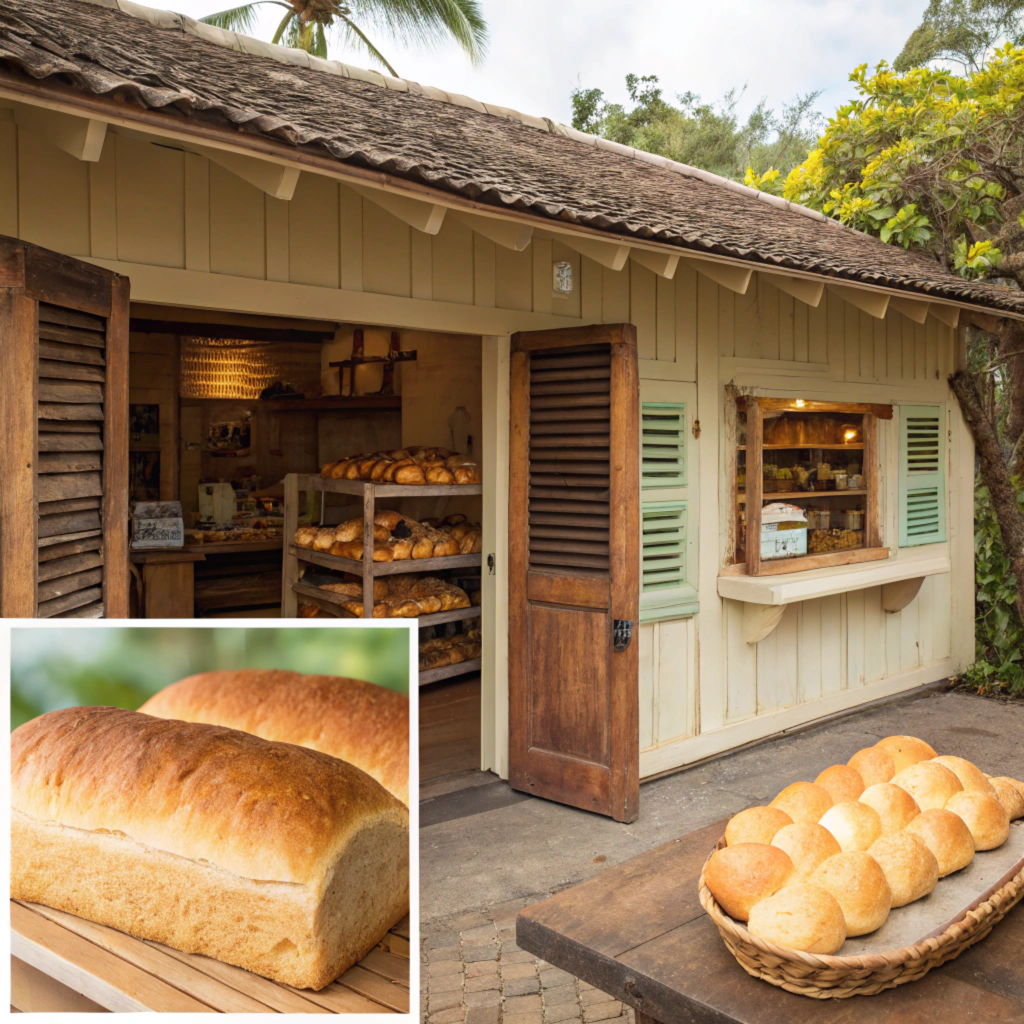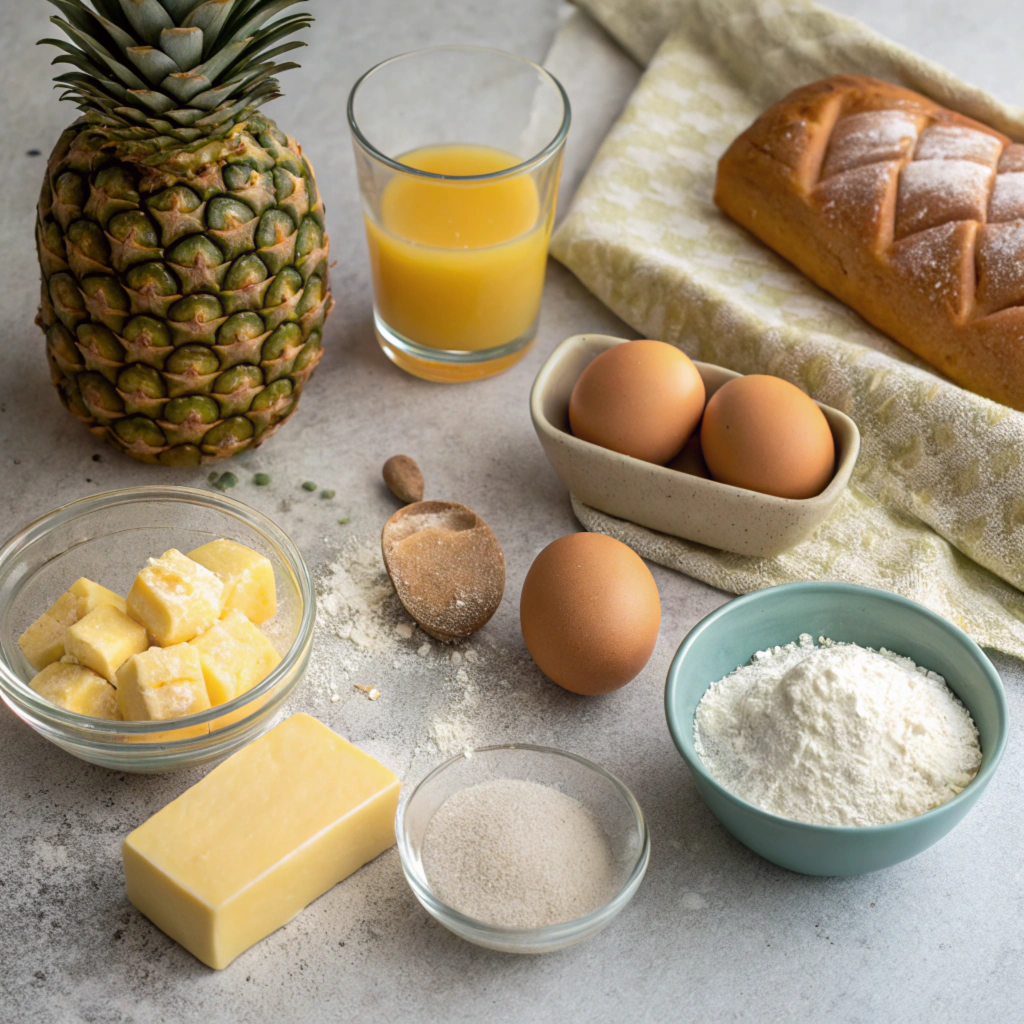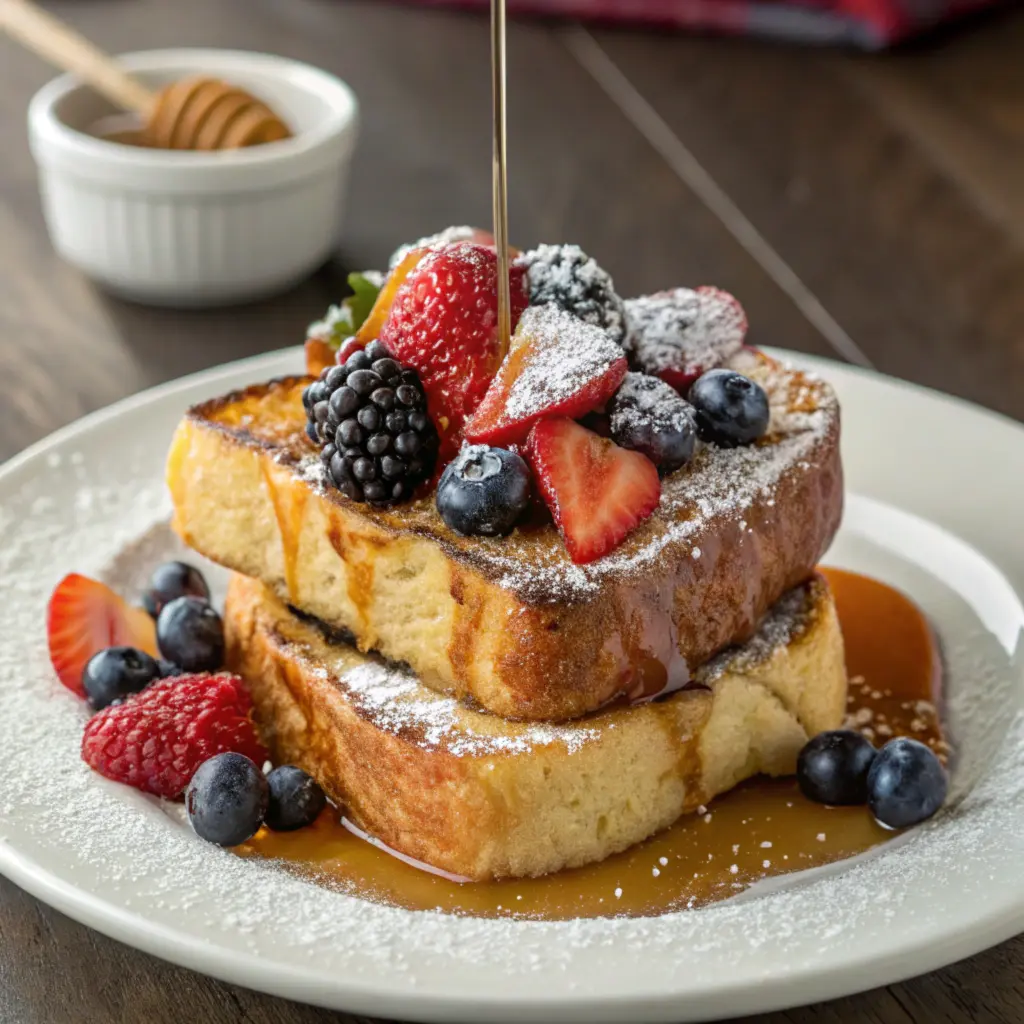There’s nothing quite like the aroma of freshly baked Hawaiian bread wafting through your kitchen. This iconic sweet bread, known for its soft, pillowy texture and irresistible flavor, has become a favorite for everything from sliders to simple snacks. In this article, we’ll explore every detail of making the perfect homemade Hawaiian bread recipe, guiding you through the ingredients, techniques, and tips to ensure success.
Why Homemade Hawaiian Bread is Better Than Store-Bought
Store-bought Hawaiian rolls might be convenient, but nothing beats the flavor and texture of homemade. By crafting your bread at home, you control the ingredients, ensuring fresher, healthier results free from unnecessary preservatives. Plus, baking your own bread is a rewarding experience that fills your home with the warm scent of fresh rolls.

Ingredients and Their Role in the Recipe
Essential Ingredients for Hawaiian Bread
To make the perfect Hawaiian Bread recipe, you’ll need a mix of staple ingredients and a few unique additions. The foundation includes bread flour, all-purpose flour, sugar, butter, and eggs. These ensure a soft, fluffy texture and a rich taste. Pineapple juice, however, is the star of this recipe, giving the bread its distinct sweetness and signature flavor.
Using instant yeast makes the dough rise faster, while a touch of salt balances the sweetness. Together, these ingredients create a delightful balance of flavors and textures that set Hawaiian bread apart from other dinner rolls.
The Role of Pineapple Juice in Hawaiian Bread
Pineapple juice isn’t just for flavor it’s also a key ingredient for achieving the soft texture Hawaiian rolls are known for. The natural acidity of the juice helps tenderize the gluten, making the bread fluffier. Plus, it lends a subtle tropical aroma that enhances the overall experience.
Balancing Bread and All-Purpose Flour
The combination of bread and all-purpose flour is crucial for the structure and softness of the rolls. Bread flour, with its higher protein content, builds gluten for better elasticity and height. Meanwhile, all-purpose flour softens the texture, preventing the rolls from becoming too chewy or dense

Preparing the Dough
Step-by-Step Guide to Mixing the Dough
Start by combining the wet ingredients pineapple juice, warm milk, melted butter, sugar, eggs, and vanilla extract. Mix until smooth. Add the yeast and let it sit for a few minutes to activate. Gradually incorporate the flours and salt, mixing until the dough forms a sticky mass.
Next, knead the dough using a stand mixer with a dough hook or by hand. Knead for about 5–7 minutes, until the dough becomes smooth and elastic. If the dough feels too sticky, sprinkle in a bit more bread flour, but avoid over-flouring.
Tips for Achieving the Perfect Dough Consistency
The dough for Hawaiian bread should be slightly tacky but manageable. If it’s too sticky to handle, give it a light dusting of flour, but remember that stickiness often leads to softer rolls. On the flip side, adding too much flour can make the bread dense and heavy.
Adjusting for Kitchen Climate and Humidity
Humidity plays a big role in dough consistency. In humid environments, the dough might feel wetter, requiring a little extra flour. Conversely, in dry climates, less flour may be needed. Adjust gradually, using small increments, to ensure the dough is just right.
By mastering these steps, you’ll be well on your way to crafting the perfect Hawaiian Bread recipe that’s soft, sweet, and irresistibly fluffy.

2.3 What Makes Hawaiian Bread Unique?
Several features set Hawaiian bread apart from other types of bread:
- Sweetness: Unlike standard white bread, Hawaiian bread incorporates pineapple juice and sugar, giving it a naturally sweet flavor.
- Fluffy Texture: The high fat content from eggs and butter creates a tender, pillowy texture.
- Golden Crust: Its distinctive crust is slightly golden and shiny, often brushed with egg wash or melted butter before baking.
- Tropical Essence: Ingredients like pineapple juice and sometimes coconut milk provide a hint of the islands in every bite.
The combination of these characteristics makes Hawaiian bread an indulgent treat that bridges the gap between traditional bread and dessert.
How to Make Hawaiian Bread at Home
3.1 Easy Homemade Recipe
Making Hawaiian bread at home is a rewarding experience, allowing you to enjoy its fresh aroma and tropical flavor right from your kitchen. Here’s a simple recipe that delivers soft, sweet, and irresistible bread.
Ingredients:
- 4 ½ cups all-purpose flour (plus extra for kneading)
- ¾ cup pineapple juice
- ½ cup granulated sugar
- ⅓ cup whole milk
- ⅓ cup unsalted butter (melted)
- 2 large eggs
- 1 packet (2 ¼ teaspoons) active dry yeast
- 1 teaspoon salt
Instructions:
- Activate the Yeast: In a small bowl, mix warm pineapple juice (around 100°F/38°C) with a teaspoon of sugar and the yeast. Let it sit for 5-10 minutes until frothy.
- Mix Wet Ingredients: In a large bowl, whisk together melted butter, milk, eggs, and the remaining sugar. Add the frothy yeast mixture.
- Combine with Dry Ingredients: Gradually add the flour and salt, mixing until a sticky dough forms.
- Knead the Dough: Place the dough on a floured surface and knead it for 8-10 minutes until it becomes smooth and elastic. Alternatively, use a stand mixer with a dough hook for about 5 minutes.
- First Rise: Place the dough in a greased bowl, cover with a clean towel, and let it rise in a warm place for 1-2 hours, or until it doubles in size.
- Shape and Second Rise: Punch down the dough, shape it into rolls or a loaf, and place in a greased baking pan. Cover and let rise for another 30-40 minutes.
- Bake: Preheat your oven to 350°F (175°C). Brush the dough with an egg wash for a glossy finish. Bake for 25-30 minutes for rolls or 35-40 minutes for a loaf, until golden brown.
- Cool and Serve: Let the bread cool for 10-15 minutes before slicing or serving.
3.2 Tips for Perfect Hawaiian Bread
- Use Fresh Ingredients: Ensure your yeast is active and your flour is fresh to achieve the best rise.
- Control the Sweetness: Adjust the sugar and pineapple juice amounts to suit your taste.
- Avoid Overbaking: Keep an eye on the bread during the final minutes to prevent a dry texture.
- Moisture Maintenance: If your bread is too dry, increase the pineapple juice slightly.
3.3 Common Mistakes to Avoid
- Skipping the Proofing Step: Proper proofing ensures the bread achieves its fluffy texture. Skipping or rushing this step can result in dense bread.
- Incorrect Liquid Temperature: Too hot can kill the yeast, while too cold will hinder activation. Aim for lukewarm (100°F/38°C).
- Adding Too Much Flour: Over-flouring during kneading can make the bread dry. Stick to the recipe and flour the surface lightly.
- Not Kneading Enough: Under-kneaded dough won’t develop the gluten structure needed for soft bread.
- Overbaking: Hawaiian bread is best when baked until just golden. Overbaking can make it hard and dry.
Culinary Uses and Pairings
4.1 Best Dishes to Pair with Hawaiian Bread
Hawaiian bread’s sweet and fluffy profile makes it a versatile addition to countless meals. Whether used as a side, a base, or the main event, here are some dishes that pair wonderfully with Hawaiian bread:
- Savory Meat Dishes: The bread’s sweetness complements savory proteins like roasted ham, barbecued chicken.
- Breakfast Favorites: Pair with scrambled eggs, bacon, or sausage for a satisfying breakfast spread.
- Soups and Stews: Serve alongside hearty soups like clam chowder, minestrone, or beef stew for dipping.
- Salads: Hawaiian rolls or croutons made from leftover bread add a touch of sweetness to Caesar or garden salads.
The bread’s ability to balance sweetness with savory flavors makes it a must-have for meals ranging from casual dinners to festive occasions.
4.2 Hawaiian Bread in Sandwiches and Sliders
Hawaiian bread is a popular choice for sandwiches and sliders due to its soft texture and slight sweetness. Here are some creative ideas to try:
- Classic Sliders: Use Hawaiian rolls to make mini sliders filled with beef patties, cheese, and caramelized onions.
- Tropical Sandwich: Pair slices of Hawaiian bread with grilled chicken, pineapple rings, and a dollop of teriyaki sauce.
- Breakfast Sandwich: Layer scrambled eggs, crispy bacon, and melted cheese between two slices of toasted Hawaiian bread.
- PB&J Upgrade: Spread peanut butter and jelly on Hawaiian bread for a kid-friendly snack with a tropical twist.
These options showcase the bread’s versatility, turning simple meals into culinary delights.
4.3 Creative Ideas for Leftover Hawaiian Bread
If you ever find yourself with leftover Hawaiian bread, don’t let it go to waste! Here are some delicious ways to repurpose it:
- French Toast: Hawaiian bread makes an indulgent French toast.
- Bread Pudding: Turn stale bread into a rich dessert by combining it with custard and baking until set. Add raisins or chocolate chips for extra flavor.
- Croutons: Cube leftover bread, toss with olive oil and herbs, and bake until crispy. Perfect for soups and salads.
- Garlic Bread: Spread slices with garlic butter and toast in the oven for a quick and flavorful side dish.
- Stuffing: Use cubed Hawaiian bread as the base for a sweet-savory stuffing recipe, ideal for Thanksgiving or holiday meals.
These ideas ensure that every last slice of Hawaiian bread is put to good use, reducing waste and enhancing your meals.

